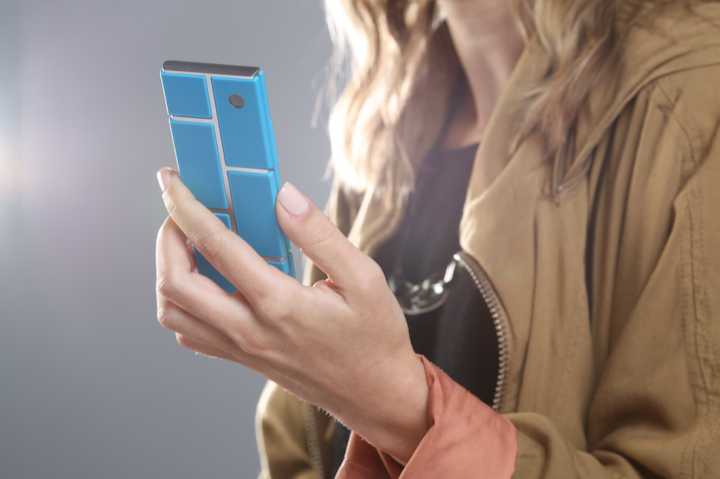Motorola Project Ara: Can Google Make 'Phoneblok'-Style Smartphones Possible?
When a video for Phonebloks -- a smartphone made of detachable blocks designed to be easily customized, upgraded and repaired -- hit YouTube in September, it quickly went viral and inspired nearly a million supporters, as well as debates of whether the technology is actually possible. Now, Motorola is jumping into the game with a surprising announcement on Monday that the Google-owned mobile-technology company is working with Phonebloks to make it a reality.
A blog post by Paul Eremenko and the Motorola Advanced Technology and Projects group announced Project Ara, a program that began more than a year ago to develop a “free, open hardware platform for creating highly modular smartphones.”

Like Phonebloks, Project Ara will consist of a structural frame called the endo (short for endoskeleton) that holds several modules. Modules include processors, displays, keyboards, batteries cameras and any other hardware feature that users have come to expect from a smartphone.
“We want to do for hardware what the Android platform has done for software: create a vibrant third-party developer ecosystem, lower the barriers to entry, increase the pace of innovation, and substantially compress development timelines,” Eremenko said. “Our goal is to drive a more thoughtful, expressive, and open relationship between users, developers, and their phones. To give you the power to decide what your phone does, how it looks, where and what it’s made of, how much it costs, and how long you’ll keep it.”

Of course that sounds great in theory, but is it actually possible? When Phonebloks exploded in popularity in September, many engineers rejected the idea as fantasy.
“The amount of bandwidth flowing between different components and frequencies involved on a pcb and the sheer number of connections just screams integration,” a user identified as “harrman11” wrote in a Reddit thread discussing Phonebloks. The comment is now the top-rated response. “Not to mention the amount of engineering that goes into things like thermal management, antennas, signal integrity, emi compliance, and power management. It may be doable but I don't think its worth doing [sic].”
Eremenko said that in the past six months, the Motorola Advanced Technology and Projects group has toured the country with rooted and hackable Motorola smartphones and 3D printing equipment. After hosting several “make-a-thons” in places like Caltech, Texas A&M, and MIT, the team was convinced that advances in 3D printing and the abilities of modern smartphones could make an open hardware ecosystem like Project Ara possible.
The team recently met with Dave Hakkens, the creator of Phonebloks, and decided to combine the technical work done by Motorola with the Phoneblok community. Having the resources of a company like Google backing the project can’t hurt either.
Now users can sign up to volunteer as Project Ara research scouts, and Eremenko said the team will send invite developers in a few months to start creating modules for the Project Ara platform. The team is aiming for an early release of an official developer’s kit this winter.
So despite the skepticism from the scientific community, Motorola and Google believe that a Phoneblok-style phone is possible and is pushing ahead.
“So stay tuned,” Eremenko said. “There will be a lot more coming from us in the next few months.”
For reference, here was the YouTube video that introduced the Phonebloks idea in September.
© Copyright IBTimes 2024. All rights reserved.






















